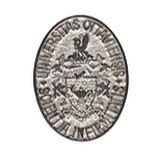WHAT IS A PINNING CEREMONY?
A pinning ceremony is a symbolic, time-honored nursing school traditionwelcoming graduating nurses into the nursing profession. New nurses are presented with nursing pins by the faculty of the nursing school or by a nurse they choose that played a significant role in this milestone. Family and friends, as well as uOttawa faculty and staff are invited to take part as we celebrate all that you have accomplished in the past four years. Pinning ceremonies also include two awards: The Valedictorian Award and The Communalis Award. There is a pinning ceremony for each stream (uOttawa English, uOttawa French, Algonquin Collaborative Woodroffe & Pembroke).
THE PIN
|
The nursing pin of the University of Ottawa bares two symbols that are particularly representative of the nursing profession. Near the top of the pin, resting on a crown on the coat of arms is a Pelican, expressing compassion for others. The other prominent symbol, the lamp, relates back to Florence Nightingale. The last symbol on your pin is the shield that refers to the Oblate Fathers, who founded the University of Ottawa and helped establish the School of Nursing in conjunction with the Gray Nuns of the Sisters of Charity. The motto on the School Coat of Arms is Aliis subventuros docemus (we teach those who are going to help others). The nursing pin communicates that wearers are knowledgeable, accountable and possess professional attributes.
|
HISTORY OF THE PIN
While convocation marks the end of a university education, the pinning ceremony marks entry in to the nursing profession. The history of the pin goes back to medieval times with the hospitaller knights who nursed the wounded in military orders. They wore the Maltese Cross of Service over their tunics. Moving forward to the 1800’s, hospitals in England had established training schools. Florence Nightingale, received the Cross of St. George in recognition of her service. The tradition of granting medals and badges to only a select few now spread to giving a badge to all graduates of a nursing program. This tradition began in hospitals such as the Nightingale School of Nursing at St Thomas Hospital in London. When the nursing pinning ceremony was first initiated in the 1860's, the lamp was commonly used as a symbol of the care and devotion the nurse administered to the sick and injured in the practice of nursing. Some hospitals used a badge with a Maltese Cross.
PINNING AWARDS
Communalis
Each year, one member of each graduating class is awarded with what is known as the Communalis Award. This award reflects the student's significant contribution in student activities, how they have demonstrated a consistent commitment and growth in the academic and clinical setting. The student must finally be recognized as having genuine interest in the well-being of others.
Valedictorian
Each year, one member of each graduating class is awarded with what is known as the Valedictorian Award. This award is usually awarded to a student with the highest academic achievements, this student will represent the class by delivering a graduation speech.

